Performing Arts Center Public Art Project
Please Help Us Choose the Next Public Art Project on Campus!
Below are two excellent proposals for the front wall of the Cerritos College Performing
Arts Center, but only one of them can be completed.
Please use the Performing Arts Center Public Art Feedback Survey to select your favorite design of the two possible designs.
Option One: OSCILLATIONS
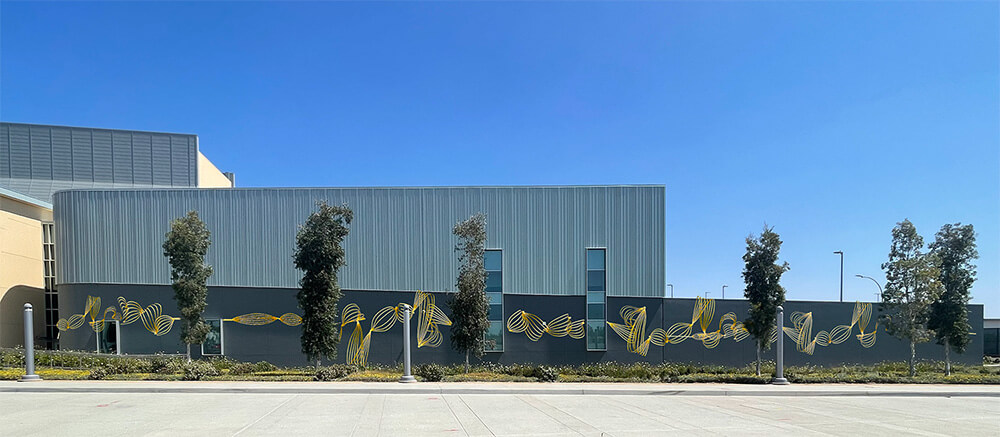
Oscillations is an original, site-specific artwork proposed for the façade of the Performing Arts Center located on the Cerritos Community College campus. It consists of modular sculptural forms fabricated out of aluminum. The artwork is inspired by musical and harmonic vibrations translated through geometric abstraction. The artist is interested in the interplay between abstraction, sound, and visual movement.
This artwork visualizes sound into a three dimensional form. The proposal aims to enhance the aesthetics of the building facade by creating a symbolic focal point for the performing arts, while also responding to place, community, and the mission of the college to support and enrich the arts on campus and within the region, as well as to provide educational excellence for the college's diverse student population.
As the site itself is a Performing Arts Center in Cerritos (also known as “little hills” in Spanish), the design represents sound, movement, and location through oscillating sculptural forms that rise and fall at various intervals along the walls of the southern side of the Performing Arts Center. In keeping with the spirit of inclusivity, diversity, and educational excellence, this public art proposal consists of a sculptural installation that represents harmony through an elaborate arrangement of modular metal forms.
The patterns for the forms are derived from a diagram of three harmonic series depicted as vibrating strings with fixed points at each end. Each harmonic mode divides it into equal sized sections that resonate at higher frequencies. At the frequencies of each vibrating mode, waves travel in both directions along the string reinforcing and canceling each other to form standing waves. The composition abstracts these waves along a wavelength as represented by a line or string at the beginning and end of the piece. Due to the modular nature of the artist's work, many compositional and color variations are possible.
The artist has selected gold as a signature color for this proposal because it adds warmth and contrast to the steel coolness of the building, while also representing excellence and achievement. Additionally, the shiny surface reveals how light and sound waves interact through the reflective quality of a metallic surface. Sound waves can modulate light in amplitude and phase/deflect it, focus it, or shift its frequency much as the viewer’s experience will shift as the reflective quality of the sculpture changes due to light and proximity. By extending off of the wall beyond its edges, the artwork will also break the rectangle geometry to create an unexpected experience for the viewer as well.
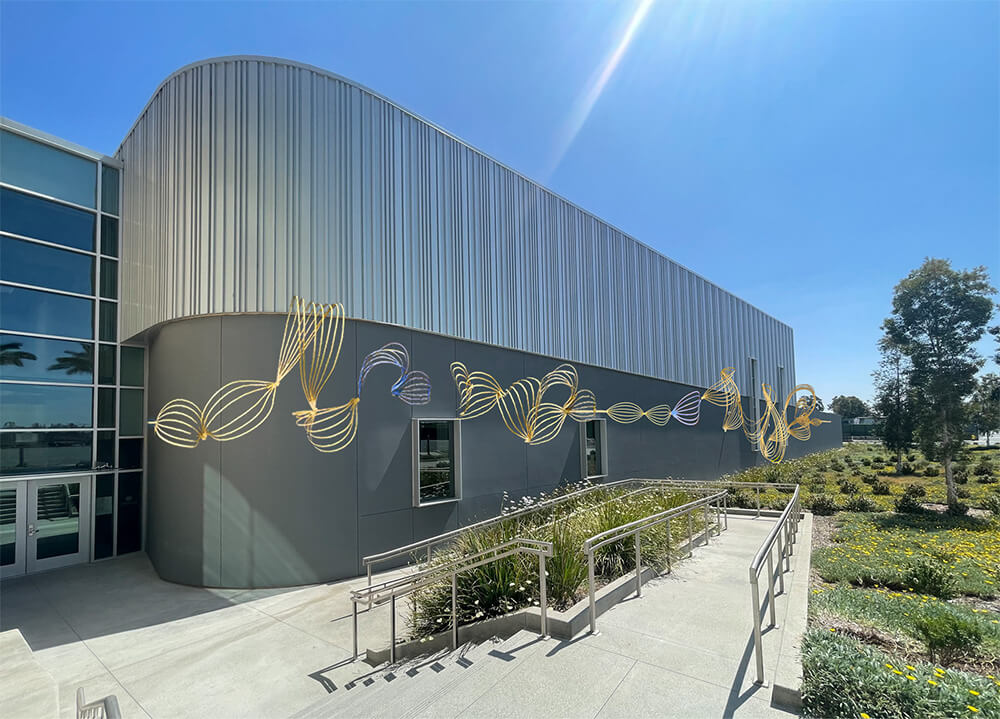
Option Two: MOVEMENT
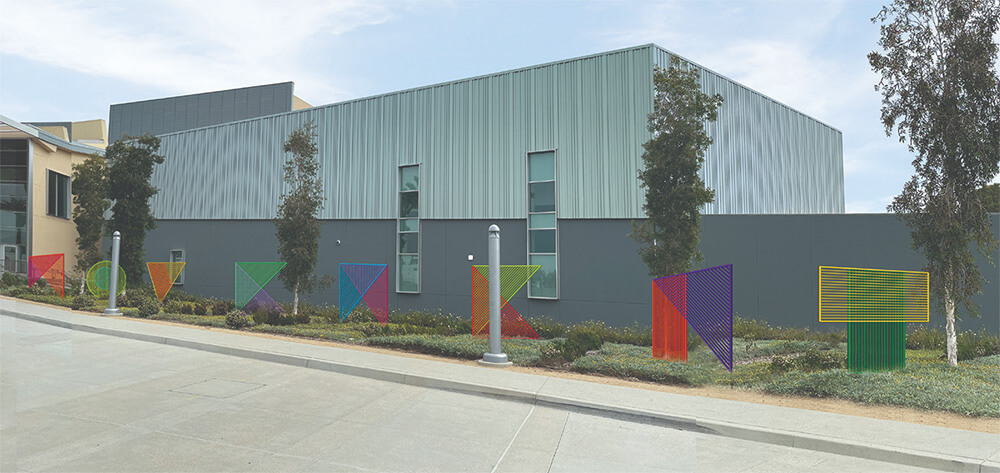
Movement is one thing that all three traditional types of performing arts — dance, theater, and music — have in common. Dance is an art form entirely based on the movement of the human body. Theater relies both on expressive physical movement and the use of dialogue or singing to propel a narrative. Music performances employ both the physical movement of singers and instrumentalists, as well as notational movement, which is a self-contained part of a composition. The term movement can also be used to describe the tendency or style in art with a specific common philosophy or goal, which is followed by a group of artists during a noted period of time. Importantly, another definition of the word movement is a collective attempt by a group of people to change political or social values, such as the recent Black Lives Matter and #MeToo movements.
The proposed artwork for the Cerritos College Performing Arts Center will celebrate movement in its many manifestations, by foregrounding the word and its embodied meanings. Kinetic sculptures notwithstanding, the visual arts, because of their still nature, have traditionally used principles such as rhythm, line, color, and optical illusion to create the impression of physical movement. The proposed design will also employ these principals. Furthermore, the artwork will utilize the idea of signage as icon, which features prominently in Southern California, to create a marquee that will contribute to the Performing Arts Center’s overall identity.
As shown in the images below, the proposed design is composed of eight free-standing
sculptures that abstract the letters of the word MOVEMENT. Each letter is made up
of a front screen and a back screen, separated by a space of about 12 inches. Each
screen will be fabricated of steel and painted a different color.
MOVEMENT WITH RHYTHM
In the performing arts, rhythm is most closely associated with music and dance. In
the visual arts, rhythm is created through a repeating motif of patterns, lines, and/or
colors. Each of the eight letters has a motif of parallel lines, that will be made
of flat steel bars. The motif sets up a rhythm and tempo at which the viewer’s eyes
will move around each letter, as well as the overall composition. Ideally, the letters
be will located in the landscape area in front of the building and the free-standing
wall. The letters will face slightly different directions, which will also set up
a rhythm across the entire installation.
MOVEMENT WITH LINES
Diagonal lines often imply movement, in contrast to vertical and horizontal lines,
which imply rest. The eight letters have lines that run at different angles, to imply
movement at certain instances while also offering moments of pause. As each letter
is made up of a front screen and a back one, the lines will crisscross where the two
screens overlap. This further creates tension and a sense of depth.
MOVEMENT WITH COLOR
The dynamic use of color can enhance the feeling of movement as well. Like musical
notes, color notes are sometimes described as either high or low key. A high-key color
is both light in value and strong in intensity. Conversely, a low-key color is both
dark and dull. For the proposed letters, different combinations of colors are used
for dynamic effect. For example, the front screen of the letter N will be painted
a low-key deep purple, while the back screen has a high-key orange color. An interesting
optical effect is created where two different colors overlap. Both colors and lines
work together to impart a feeling of movement.
MOVEMENT WITH ILLUSION
Movement can also be suggested by the use of optical illusions, which was historically
appropriated to great effect by Op Art artists. For the proposed artwork, the layering
of striped patterns (with different directions) will create a moiré effect, which
is an optical illusion of subtle wave movements that is visible at certain angles.
This optical illusion will be most visible when viewed by a person in motion. Therefore,
those walking along the sidewalk that fronts the Performing Arts Center, or biking,
or even driving past, will be able to see moments of this moiré effect as they move
across the positions of the sculptures.
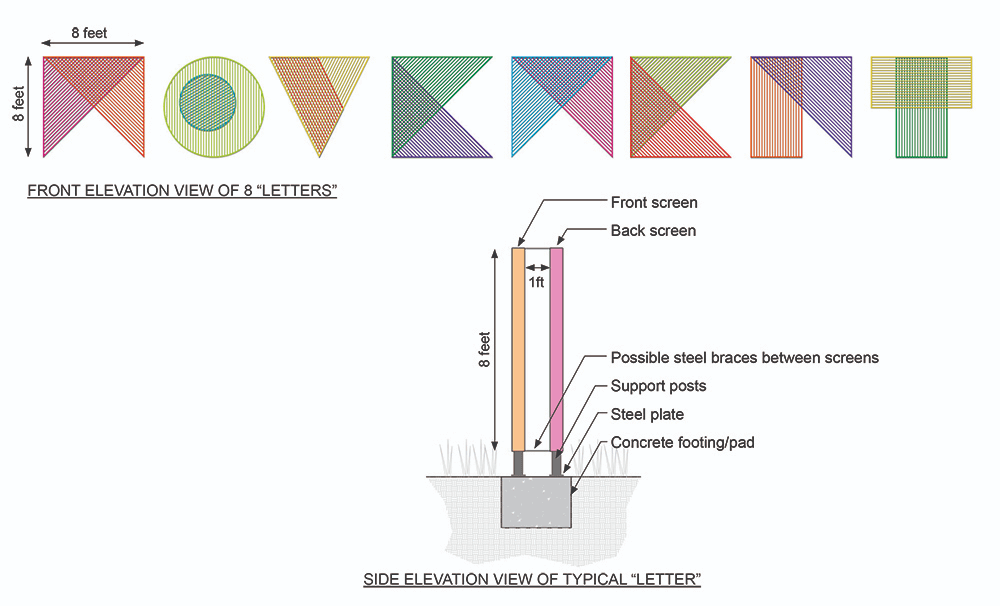
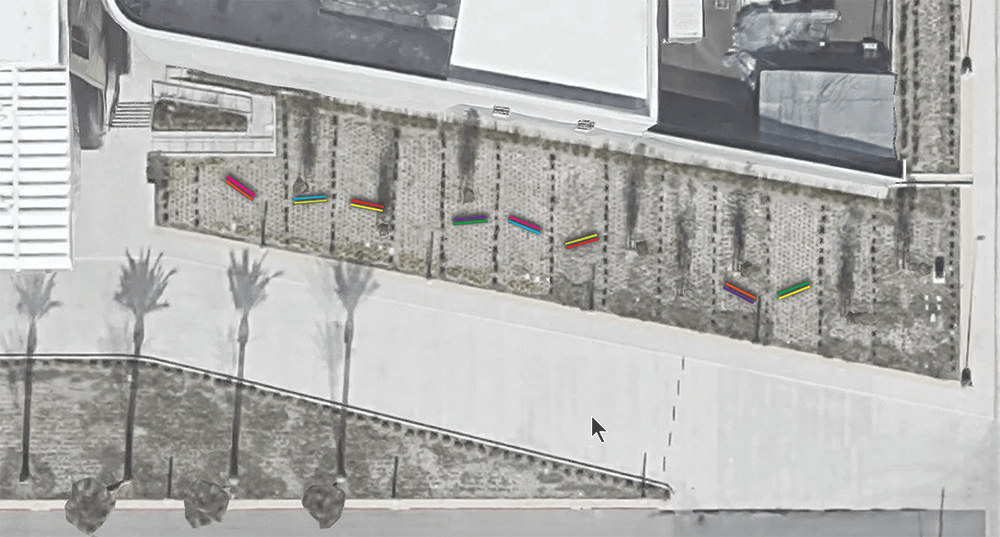

Stay Connected